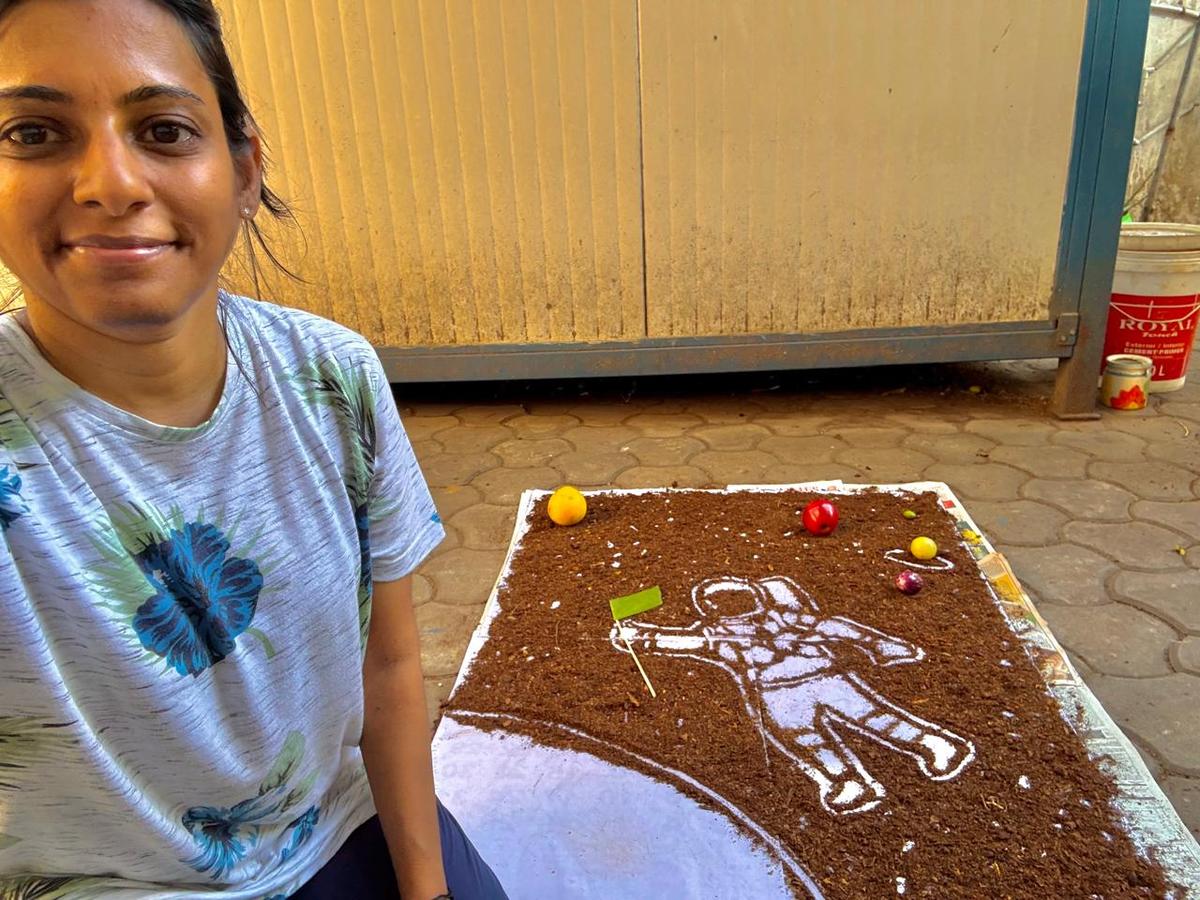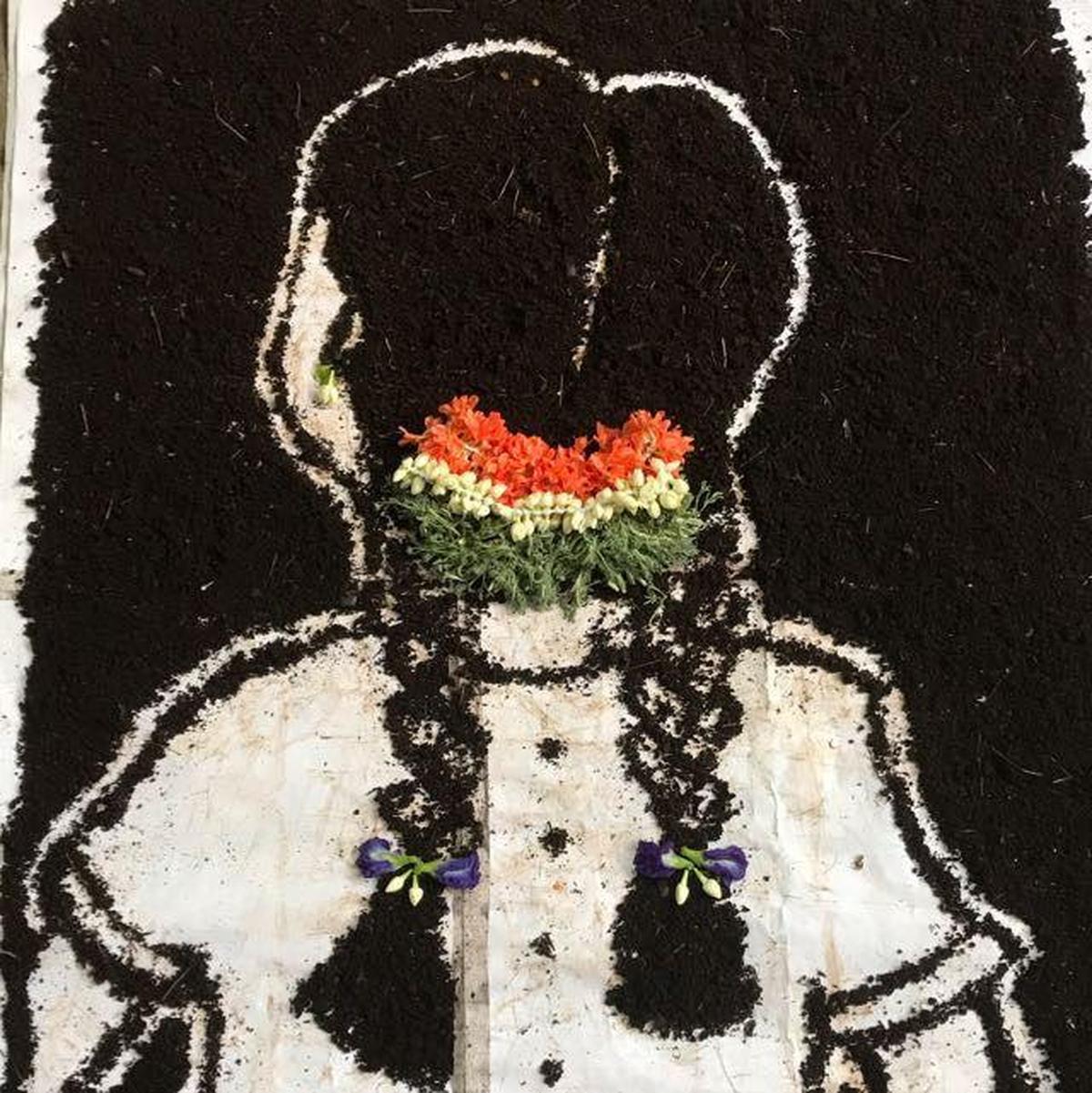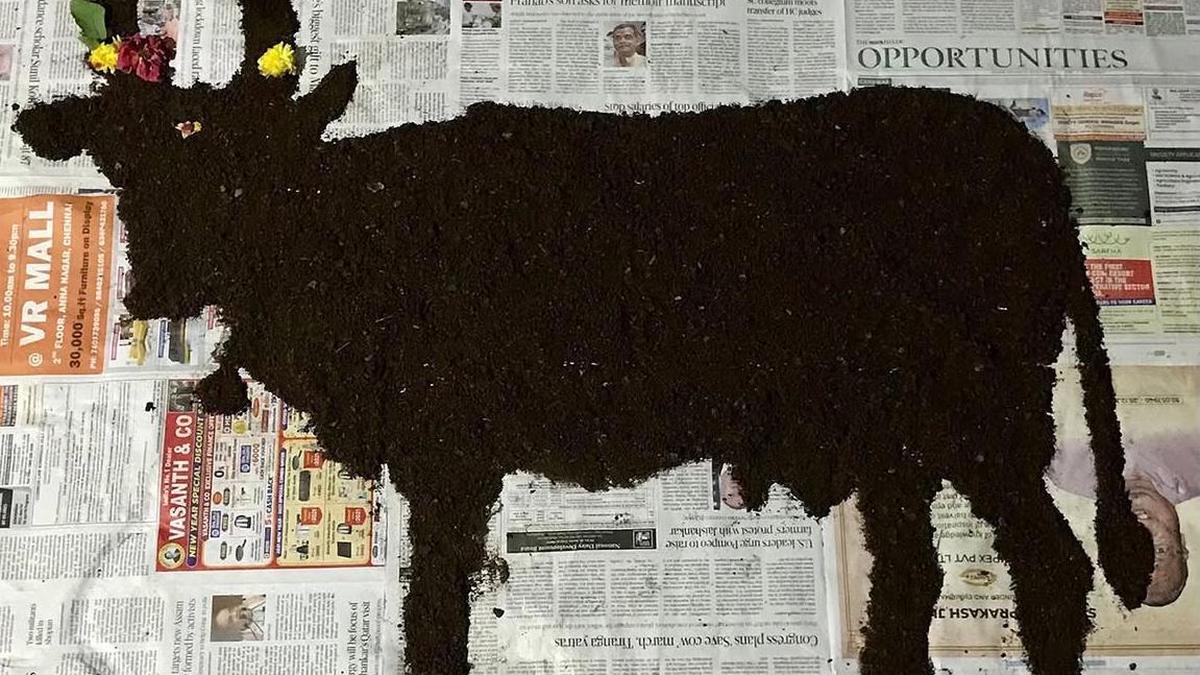Green souls have to acknowledge reality. #compost will remain gently clicked. Composting advocates are voices in the wilderness, their messages often echoing back to themselves unheard. So, in a crowded digital space where more exciting hashtags, some of meretricious character, are being peddled, how can their message get noticed? Saraswathi Shanmugasundaram, a resident of an apartment at Luz in Mylapore and a composting advocate, offers an answer, actually demonstrates it. On her Instagram page @onelittlepalette, the hashtag #compostart is as profusely distributed as colourful Ixora in a rain-drenched garden.
Saraswathi, also wearing the work badges of an IT professional and yoga instructor, has experienced the misadventures pre-destined from every greenhorn compost enthusiast. Despite her bins producing underwhelming composts — one bin even got swept into a burglar’s heist bag — she stayed resiliently at the composting post and in time, became a composting evangelist. And just like that, she discovered compost could be a canvas. And that #compostart can bring the missing visibility to the green practice, in her eyes not at all optional but every household’s bounden duty.

Saraswathi Shanmugasundaram
She recalls the discovery: “People usually sieve compost after the cycle finishes to remove small plastics like apple stickers or threads from puja flowers and to catch chunky particles for the next cycle. When I sieved compost, I would spread newspaper and sieve it out. It spread like a flat bed and looked like a black slate where you could write or place something, like scribbling on mud or sand. Touching and feeling the compost led me to think of drawing and creating art from it.”

Compost art from @onelittlepalette
The first sketches were simple smileys, but they gradually grew elaborate, festival motifs and seasonal designs entering the picture. “To add colours, I use natural materials like fallen leaves, vegetable peels, flowers from the garden, sometimes fresh fruits or vegetable colours, everything that is compostable. Once the art is done, the compost goes to the plants and the materials used for colour go back into the compost bin or are washed if needed.”
During one Vinayaka Chaturthi , she experimented with moist compost. “I added water, but it crumbled and that is how compost texture should be, crumbly but moist but it was not good enough to hold as an object. So I spread it out on newspaper or old calendar sheets, spread the sieved compost, and used my hands and fingers to draw the picture.”
Saraswathi regularly posts videos of her #compostart on her YouTube channel (also “onelittlepallete) and in Instagram reels. Her documented artworks and #compostart track record include Nature Cake made from compost for Forest & Bird, a New Zealand-based organisation, for its 100th year celebration, compost art stalls at Solitude Farm where people create their own designs and colourful installations at Rosary Matriculation Higher Secondary School, Mylapore, for its 75th-year celebrations. Her personal favourites include Malar, crafted entirely from composted puja flowers, and the simple Sunflower.
Her practice has also evolved into compost-art diaries, which she suggests make ideal gifts for anyone eco-conscious, artistically inclined, or curious about climate action. Each diary combines artwork with tips, snippets, and solutions about composting. Even in informal workshops, she encourages participants to “play” with compost, feeling its texture and realising it is neither smelly nor dirty — simply soil in formation.
A starting point
Nilayaan, a community-focused environmental initiative that works to promote sustainable waste management, and composting practices takes compost art to boardrooms and classrooms, since 2022. Deepesh Bhaskar, founder of Nilayaan, believes compost art can be a powerful stating point in environment and climate education for children.
“The whole idea is to make children aware of composting in a unified and nature-centric way,” says Deepesh.
The adventure starts with a nature walk, where kids from Play-KG to 8th standard collect fallen leaves and twigs. “We do not let them pluck anything,” says Deepesh, “but they do get a handful of compost to work their magic.” Then, divided into groups and given themes inspired by the elements — air, water, fire, earth and space — they create art that literally grows from the ground up.
And here is the twist: most kids do not even realise they’re working with compost. “Towards the end, we reveal that the materials came from kitchen waste, and suddenly they are touching, smelling, and learning all about it,” Deepesh explains. It’s not just about making art; it’s about making the invisible world of microorganisms visible and fun.
In corporate wellness programmes, Nilayaan offers lessons in composting neatly wrapped in compost art. The overall theme of these sessions is “Composting Against Climate”.
Published – October 03, 2025 07:00 am IST

